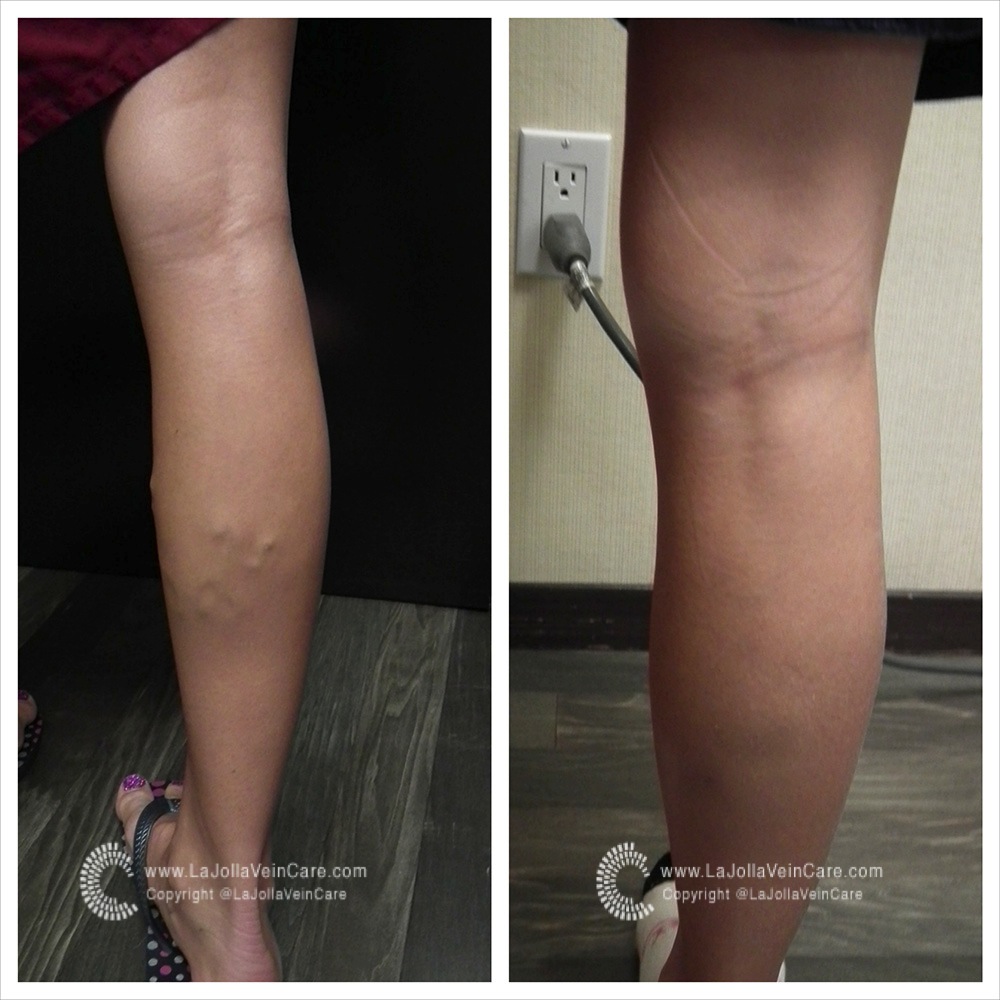4, 9, 2014
Before and After Photo: Varicose VeinsWeb@ljvascular.com2021-11-04T17:21:11-07:00
29, 7, 2014
Before and After Pictures: Varicose VeinsLa Jolla Vein Care2021-11-04T20:15:13-07:00
18, 6, 2014
Dr. Bunke Presents at SVM Scientific SessionsLa Jolla Vein Care2021-11-05T11:10:02-07:00
Can Spider Veins Be Painful?La Jolla Vein Care2021-11-04T17:38:02-07:00
30, 5, 2014
Can Varicose Veins Cause Leg Ulcers?La Jolla Vein Care2021-11-03T23:17:13-07:00
Spider Vein Sclerotherapy Animation
La Jolla Vein Care2021-11-04T16:45:11-07:00
To see before and after pictures for sclerotherapy treatment of spider veins, please see our blog postings and before and after gallery.
What If I need my Great Saphenous Vein for Bypass Someday?
La Jolla Vein Care2021-11-04T16:18:45-07:0014, 4, 2014
La Jolla Vein Care Chosen To Participate in Compression Trial
La Jolla Vein Care2021-11-04T13:15:55-07:00La Jolla Vein Care Participates in ACTitouch™ Adaptive Compression Therapy Trial

Selected patients at La Jolla Vein Care will be offered to participate in the ACTitouch compression trial. Compression therapy is used for the treatment and […]
Meet La Jolla Vein Care’s Dr. Fronek, Vein SpecialistLa Jolla Vein Care2014-04-04T01:01:22-07:00
26, 3, 2014
Am I Too Old? Varicose Vein Treatment at Any Age
La Jolla Vein Care2021-11-04T19:02:17-07:00We’re often asked, ‘Am I too old to treat my varicose veins?’ The answer is no. Since modern varicose vein treatments are largely non-surgical, there are appropriate treatment options for those of any age. While varicose veins are more common with each decade of life, they can appear on young teenagers or at any time […]









